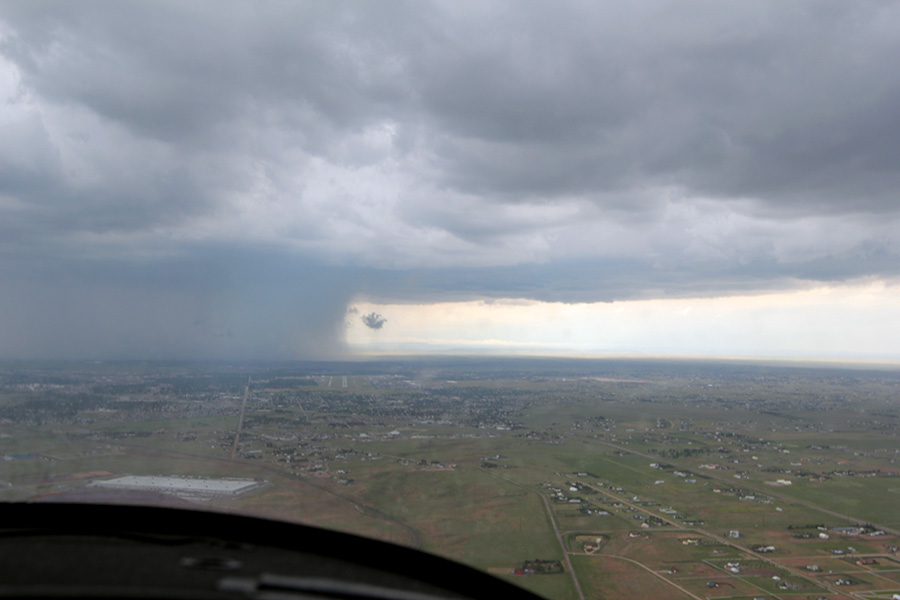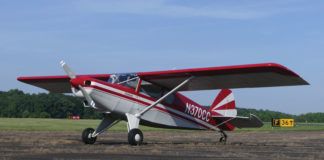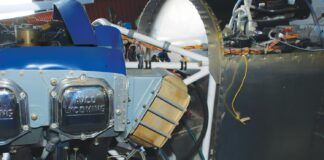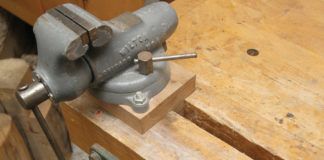One day as we were cruising along in azure blue skies, comfortably watching the scenery go by, my wife Carol asked, “So why do you need all of this fancy equipment?” My immediate answer was, “You haven’t had a bad ride yet, have you?” Since I like her company, and it is important to me that she flies with me, keeping her comfortable should ensure that.
Truth be told, we probably don’t need all of the fancy equipment, and we know we give up some aircraft performance for every pound we add in the panel. Cool factor aside, some of the latest equipment, without a doubt, adds to the safety and comfort of the flight. And I am all for any piece of equipment that will get our heads out of the cockpit or add to the safe conclusion of the flight.
Let me share my thoughts in order of preference for new gadgets, based on contribution to the safe outcome of a flight. It is also somewhat shaded by the majority of flying that I do, as well as being based underneath the Class B veil of the busiest airport in the world—Atlanta Hartsfield.
Although most of us learned to fly with a compass, clock, and maybe some form of nav radio, I find a GPS moving map display with a current database to be at the top of my list. Anything from top-of-the-line Garmin panel mounts to portable units, and even iPads, will meet this need. In today’s complex airspace and last-minute TFRs, the cost of the unit is vastly outweighed by the threat of license action should a violation occur, to say nothing of the potential safety issue.
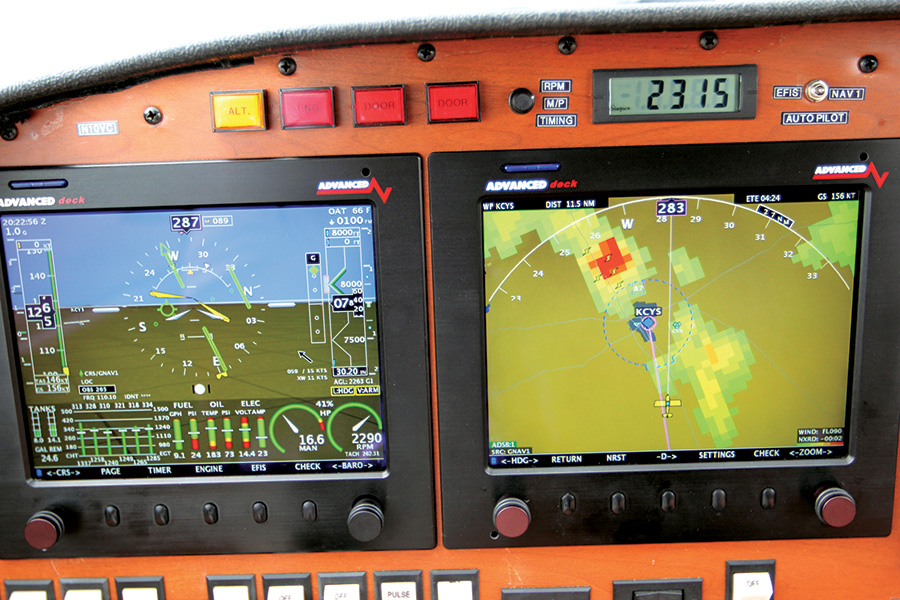
How’s this to justify the toys? This looks worse on the display than it was looking out the window. I would never do this if IMC. We were in the clear approaching Cheyenne, Wyo. The onboard weather gave us the confidence we could get to the runway before the storm hit. We stayed on schedule for our trip to Alaska.
The wealth of information that modern GPS units provide is amazing. All of the in-flight data, such as time to destination and fuel needed (if connected to a flow meter), does wonders to eliminate heads-down time in the cockpit figuring this stuff out. Some of the portable units even have destination info, including fuel prices and hours of operation, so we can make decisions in flight should weather, winds aloft, or passengers create a need for a diversion. And once on the ground, some even give warnings when approaching potential “hot spots” around runways and taxiways. I know that I find this particular piece of information most useful when flying into unfamiliar airports.
Next on the list for me is some kind of traffic awareness. I’ve been flying with traffic awareness for many years now, both in general aviation and in my short stint with a major regional connection carrier. While TCAS that the big boys have is not readily affordable for GA yet, both TIS and ADS-B are, and new options for ADS-B are rapidly increasing. I find traffic information invaluable in the high-density traffic areas underneath Class B veils. It’s also amazing to me how many times ATC calls out traffic and I never see it—but that seems to occur less often with traffic displayed in the cockpit. I think it is because I see the traffic displayed prior to the initial ATC call and I have already been looking for it. A trick I have learned is that instead of looking for the traffic at, say, 2 o’clock and 5 miles, and finding nothing due to space myopia, a quick glance at the moving map will show where the target is in relation to the nearest landmark, such as a lake or road. It’s amazing how much faster I can find the traffic when my eyes are focused at the proper distance. Try it yourself, if you haven’t already.
Another benefit of ADS-B traffic systems is the added weather, something I find most useful for cross-country flying. It’s certainly not something I would use for tactical decisions such as thunderstorm penetration, but for long-range strategic planning it is wonderful. It takes a lot of anxiety out of the trip, especially for passengers. On one of our trips out West, we were going through a cold front. It was intermittent IMC, and a little rough. We could see on the map overlay when we should get through it, and we were looking forward to our destination. I was constantly looking at both the METAR and TAF, and everything was holding as promised—clear and greater than 10 mile visibility upon our arrival. Why I don’t know, but something caught my eye that wasn’t there before—the winds. Well, guess what usually follows fast-moving cold fronts? Winds. Strong winds sometimes, along with the commensurate bumps. Guess what? We landed in VFR conditions on this side of the front in smooth air, short of our destination, but a good ride.
Complete engine monitoring systems, including a fuel-flow computer, really bring engine management to a whole new level. An engine that is continuously run within its recommended limits has a much better chance of reliably running to TBO. Given the cost of new engines and overhauls today, I think this is one piece of equipment that can certainly be cost justified. As an example, proper leaning can perhaps save one extra gallon per hour of flight, and with today’s fuel prices, the savings can almost pay for a top overhaul. As an extra, the data captured by the EMS can be invaluable to the mechanic (most likely you) if or when it comes time to diagnose engine problems. Just recently I had someone ask me to help him with his overheating problem on an RV, and unfortunately, he only had a spark plug CHT probe on one cylinder. With the limited information it was extremely difficult to know if it was just one cylinder, the whole engine, or even a gauge. And we could have found out that this was actually the coldest cylinder!
So, those are my top three categories for “must have” toys. My next categories are what I would call creature comforts, for both the pilot and the passengers. Being comfortable can contribute to better decision making by the pilot, and comfortable passengers tend to put less pressure on the pilot to make bad decisions.
First, invest in good headsets and a good intercom so that you and your passengers can clearly hear each other. You will be surprised at how much more fun it is for everyone, as well as how much less tiring it is. Passenger anxiety is usually much less when they can talk, ask questions, and overall feel like they are involved. Ever notice how great flight crews ease the tension in the cabin by communicating and explaining why the ride is bumpy, or the reason for the delayed arrival? Sometimes, on even the simplest of aircraft, such as my good friend’s Pietenpol, a good headset and intercom is the highest priority toy, and probably the only toy!
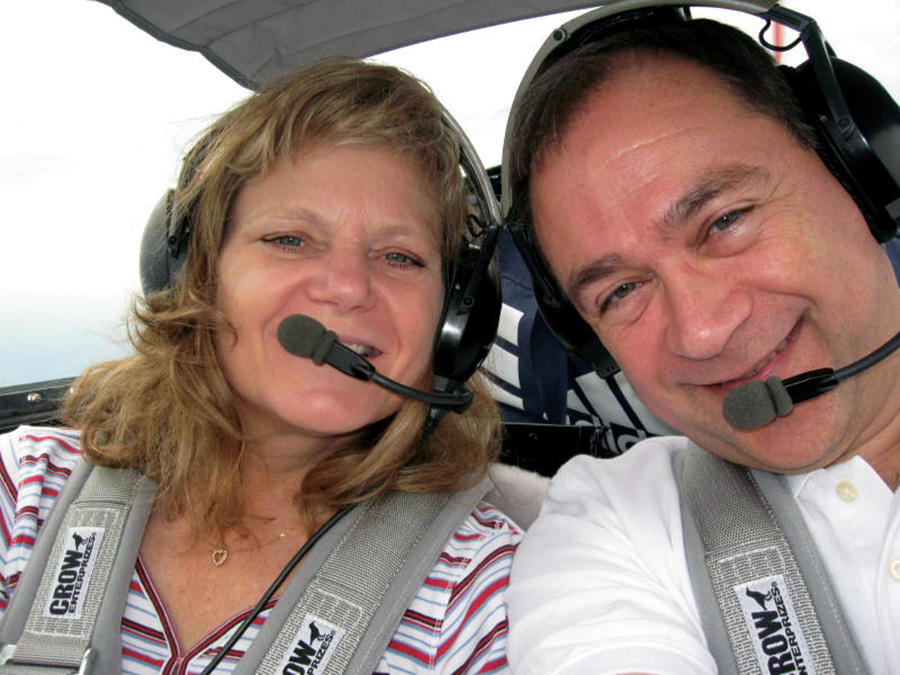
Vic and Carol Syracuse. Good headsets make for clear conversations and happy faces while en route, especially when using the onboard tools to avoid the weather!
Next, have a functional ventilation and heating system. Keep in mind that most of us are flying for fun. We are not trying to blaze new airmail routes. There are so many lightweight options today, from heated seats (even portable automotive heated seat covers) to heated jacket liners that run on batteries, that there is no excuse to not keep yourself and your passengers warm on even the coldest days. As for the hot days, most air-conditioning systems are too heavy for GA aircraft, and even the portable coolers tend to be heavy and have a limited time of use. Try flying in the morning or evenings when it’s hot, and certainly climb into cooler air as soon as practical. If you can’t outclimb the hot air in the summer, then consider not flying until things cool down. Even your engine will appreciate it!
There’s one other item that I consider very useful as a safety item, and that is the use of oxygen. While the FAA mandates its use above certain altitudes, that doesn’t mean you can’t use it at lower altitudes. Carol and I have taken to using oxygen any time above 10,000 feet on climbout, and it usually doesn’t come off until around 7000 feet on descent. Yes, we have an O2 saturation sensor on board, and there is a marked difference when using oxygen. We also notice we are a whole lot less tired upon our arrival. With so many portable oxygen options today, along with the ability to fill them yourself, this is another option that has many benefits.
So, there you have it—my thoughts on how to justify the toys!
Photos: Vic Syracuse

![]()
Vic is a Commercial Pilot and CFII with ASMEL/ASES ratings, an A&P, DAR, and EAA Technical Advisor and Flight Counselor. Passionately involved in aviation for over 36 years, he has built nine award-winning aircraft and has logged over 7400 hours in over 65 different kinds of aircraft. Vic had a career in technology as a senior-level executive and volunteers as a Young Eagle pilot and Angel Flight pilot. He also has his own sport aviation business called Base Leg Aviation.

